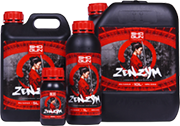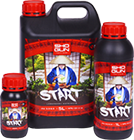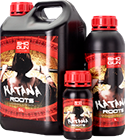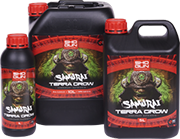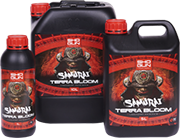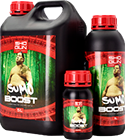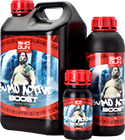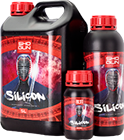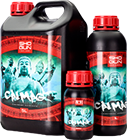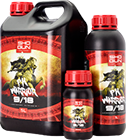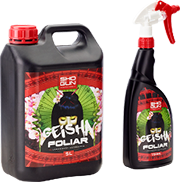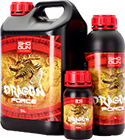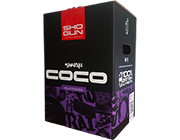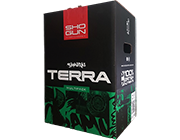7 Mistakes Growers Make With Humidity
Anyone who’s ever worked in a hydroponics grow store will be familiar with the following scenario.
A customer comes in wondering why their plants are showing chlorosis, leaf curling, and looking generally unhealthy, and demand Epsom salts or the latest wonder juice to fix the issue. The sales advisor goes through the usual questions about feed regimes and grow setups, as every good sales adviser should, before asking “What’s your humidity at”? To which the answer is often “Erm. Bang on probably? No, this is definitely a magnesium deficiency.”
Really? Because a surprisingly large number of issues boil down to your humidity levels – a vital, and often overlooked aspect of your grow environment. Here we have a look at Seven Mistakes Growers Make With Humidity!
1. Mistake Number One: Not bothering to check your humidity levels.
Most growers will admit they simply have no idea what their relative humidity (RH) level is, and it’s a shame because it’s crucial for the health of your plants. You might have a rough idea that in your closed environment, with the lights on, humidity is around 30%, rising to 65% at night. So it balances out and everything’s cool, right? No! RH plays such a big part in your plants’ productivity. Deficiencies and toxicities are often a secondary effect of the primary cause - HUMIDITY issues. Knowledge is power, so invest in a hygrometer!
2. Mistake Number Two: Humidity too low.
The process through which water travels within plants is called transpiration. Water is drawn up the roots via osmosis, and exits the plant by evaporating via tiny pores on the leaves called stomata. The dryer the air the easier evaporation becomes. So if RH is low your plant tries to compensate for the higher evaporation rate by drawing more water through its roots. Salts get left behind in the growing media, and EC goes up in the nutrient solution. This can result in nutrient build up and lockout, leaving your plant to display, for example, signs of calcium and magnesium deficiencies. To get around this, consider buying a humidifier (or simply leave some wet sponges or bowls in your grow space if money’s tight).
3. Mistake Number Three: Humidity too high.
High RH by contrast slows evaporation, causing your plants to stop drawing water from your nutrient solution or soil (calcium in particular relies on transpiration for its uptake). Keep this up for a prolonged period and you’ll find your plant eventually rots. A get-around for this is to buy a dehumidifier and / or air conditioner. You could also try not overwatering your plants, investing in more or better fans, properly sealing your grow space, reducing plant density and removing stagnant water.
4. Mistake Number Four: Temperature too high.
Air temperature plays a huge part in the RH of your room. When temperatures are set too high there’s an increase in the amount of water evaporation, which you might think would lead to more vapour and therefore more humidity. Wrong. Warm air holds more moisture than cold air, but cold air doesn’t need as much moisture to become saturated. So with the same amount of absolute humidity, air will have a HIGHER relative humidity if the air is cooler, and a LOWER relative humidity if the air is warmer. And as we know, low humidity levels are not kind to your plants. Keep temperatures down with a good air conditioner, a proper ventilation system, a water cooling system and / or a dehumidifier.
5. Mistake Number Five: Temperature too low.
As the temperature of the air falls, the water vapour in the air condenses and produces water droplets – like you see on cold panes of glass. This condensation can occur on the surface of leaves, especially in the lower parts of the plant, forming the perfect conditions for botrytis and other plant-destroying nasties to thrive. Temperatures will drop anyway during the dark period, compounding your humidity problem. Tackle this with proper insulation, maybe even a carpet or rug on the grow room floor, or consider switching lighting periods – with lights on at night and lights off during the day. You could also get a tube heater or add more lamps to your setup.
6. Mistake Number Six: Not recognising the signs of humidity problems.
Treat your plants like you would with your other half – i.e. watch out for signs and symptoms of problems before they become insurmountable. For example, if you have a high humidity problem you would see your leaves curling UP, whereas low humidity causes leaves to curl DOWN and under. Calcium deficiency, grey mould or botrytis are all signs of high humidity, while tip burn is an early warning sign of low humidity. The key is, keep your eyes peeled and pay attention to what your plants are trying to tell you!
7. Mistake Number Seven: Forgetting to be flexible.
Your goal should be an environment for a happily transpiring plant which doesn’t simultaneously produce the perfect fungal paradise. But there is no one magic bullet humidity level. Generally, as the temperature increases, humidity should too to compensate for the increase in transpiration. Higher humidity is more desirable in the vegetative phase of your plants’ life cycle; in the day time (21-28°C), you want humidity around 65-80%, while at night (15-23°C) you need to aim for 55-70%. Once the flowers set and fruit have started to form, a lower humidity is more desirable to help reduce the risk of disease – during both day and night 55-70% RH is sufficient. Ultimately, unlike the mind’s endless stream of doubts, the humidity in your grow space is not something you can safely ignore. Monitor, monitor, monitor … and be prepared to react to the changing needs of your plants. Good luck growers!
With thanks to Dr. Callie Seaman.
